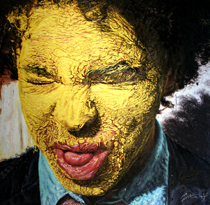Fiction Review
Andrew MacDonald
The Town That Drowned
By Riel Nason
Fredericton, NB: Goose Lane, 2011.
280 pp. $19.95
There is a lot to like about Riel Nason’s debut novel, The Town That Drowned. The premise, for example, is delicious: a little girl bashes her head and has a premonition of a town overcome by water, only to have circumstance conspire to bring the vision’s content into being. And that girl, Ruby, becomes a companion we enjoy having, navigating girlhood, her small New Brunswick town, and life with a brother who seems to suffer from a kind of undiagnosed autism. There’s also a love interest, and an affecting, if not entirely unpredictable, ending that fits.
Nason’s novel takes place over the course of three years, in a different kind of Sixties, a small Canadian town far from the cultural stereotypes, the hippy-isms, the tuning in, turning off, and the like. In the hands of Nason, it’s not a bad place to be. Her cast of characters, too, make cozy company, particularly Mr. Cole, an endearing figure who functions as a kind of mentor for our saucer-eyed narrator. In terms of conflict, Ruby’s problems creep up on her with eerie portent: whether it’s the impending flood, the jeers of classmates, or Percy’s escalating emotional fragility, Nason excels at generating suspense that builds silently. We wonder: when the town actually drowns, how many of its residents will suffer a similar fate, either literally or figuratively?
And here’s where this review takes a potentially dark turn. At times, the novel feels a bit familiar, the narrative accreting all the elements needed to be classified as a particular sort of Canadian coming of age narrative that’s seeing a renaissance these days. For example, your main character needs to be a young outcast (check) with an odd interest or hobby (woodcarving, for example). She must recover a boon, bump heads with the values of her community, and experience a near-crippling loss that facilitates her transformation from tabula rasa to adult (check in triplicate). And if we’re feeling particularly, you know, Atwoodian, all of the above will take place in a small town or some version of the Canadian hinterland, as per Survival, her oft-cited survey study of Can-lit (check!).
All of which makes it sound like I didn’t like the novel. I did. What Nason does, she does well. The writing, for example, is finely polished, the locale evocative, and her dialogue rings true. In Ruby, she nails the voice of youth. It’s also clear that Nason knows where to find a story: the narrative of the novel echoes the real life flooding of a similar town in the Sixties.
There are some really beautiful images going on here, too, like an injury Ruby suffers whilst carving one of her wooden figures: “Today I’m stating a brand-new figure, so I choose a piece of driftwood and begin the tough job of roughing out the shape. I start to remember Troy’s kiss at work, but about three strokes in, and all in the matter of a second, my knife slips off the end of the wood and grazes my left wrist.†Later, the mark will be examined by others, commented upon, seen, in a jokingly serious way, as an attempt to “do [herself] in.†Even without an inkling of the story’s trajectory, we know that Ruby’s inching close to catastrophe.
Percy, Ruby’s enigmatic brother, might be my favourite part of the novel. There’s a quiet sadness in his struggle against change, in the way in which his relentless reaching out to the world gets misinterpreted by those around him. We learn that, as a child, Percy learned to speak at fourteen months, “but then somehow his little brain forgot.†Ruby explains that “there were seventeen words my brother once spoke: ball, cup, dog, water, book, cow, baby, car, truck, milk, bird, boat, river, bear, cat, door, and deer,†and while she can’t remember ever hearing him say those words back then, Ruby has seen them “on a sheet of paper folded up in my mother’s jewellery box.†Implicit in that observation is a sense of ineffable loss that both Percy and Ruby will end up sharing by the novel’s end.
The problem with reviewing books is that it’s the reviewer’s job to conflate opinion and objectivity. Put another way, it takes two to tango. It is such that if you change up one of the dancers, the dance looks radically different. Because this dancer enjoyed the way The Town that Drowned moved him, he felt as if he has met this partner before and have taken many of this particular dance steps in the past.






No Comments so far ↓
There are no comments yet...Kick things off by filling out the form below.